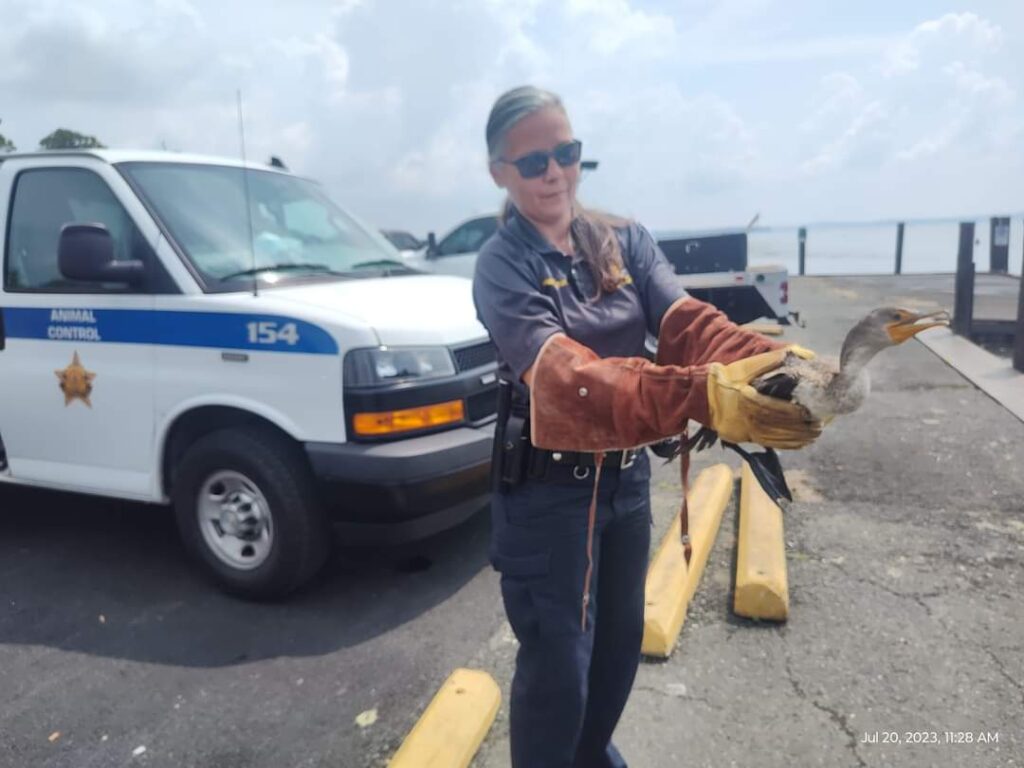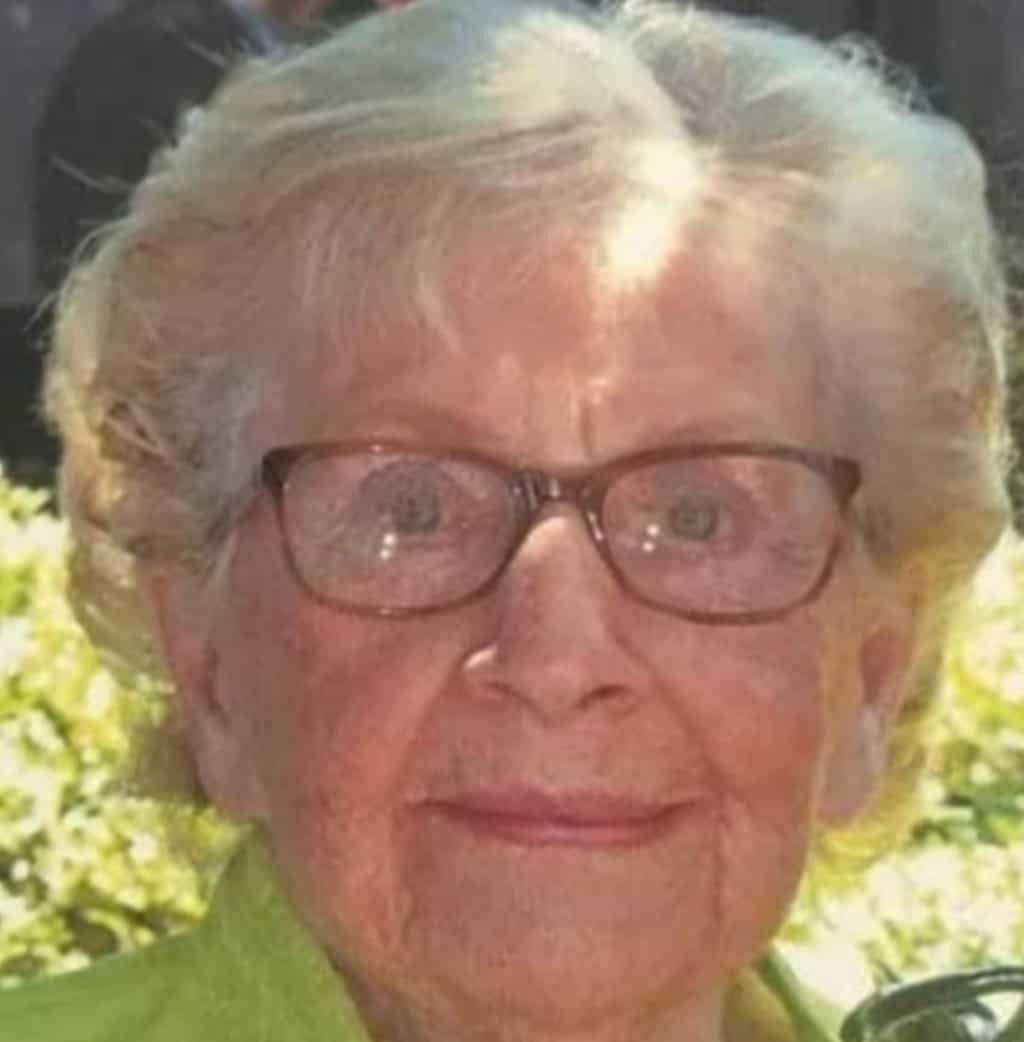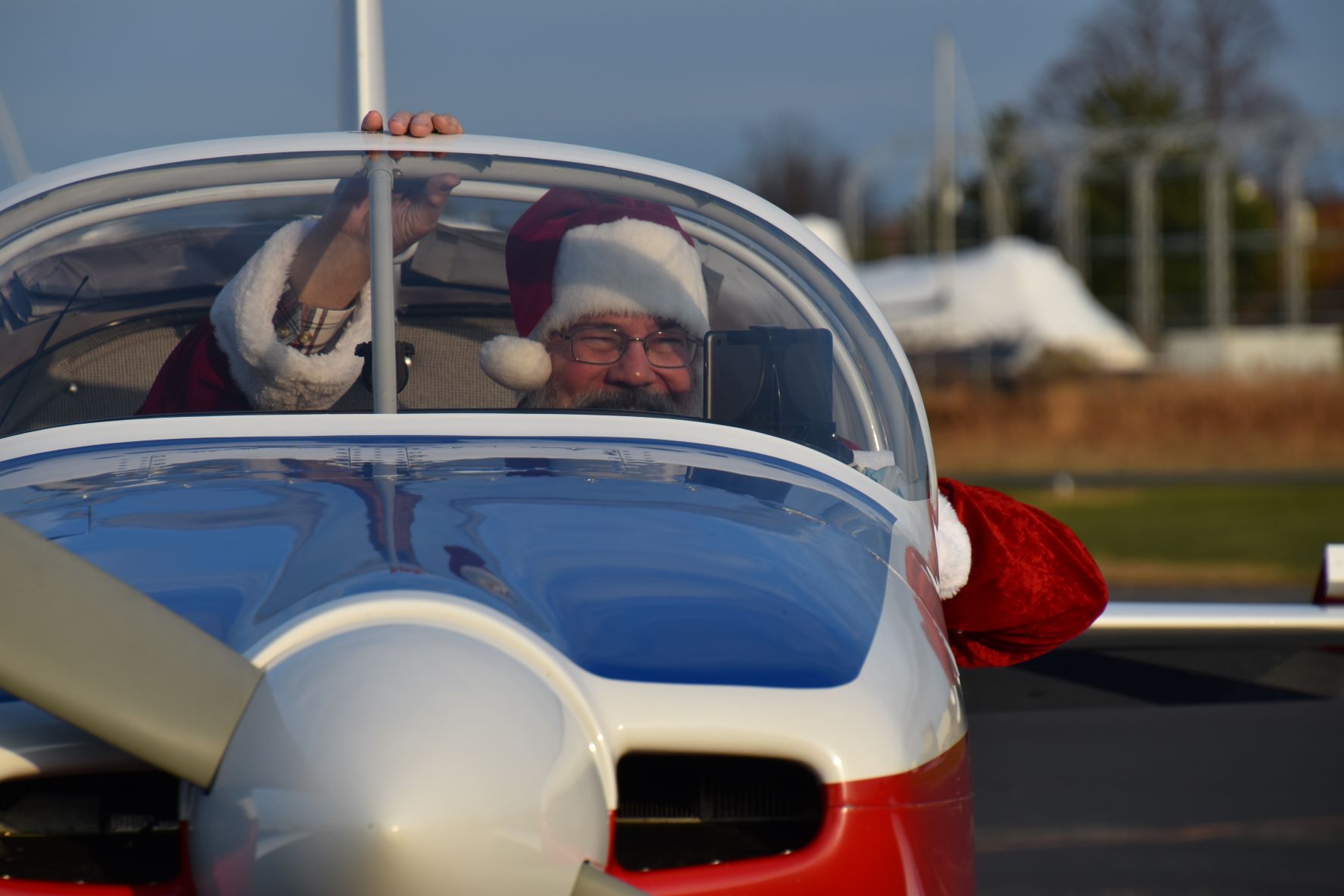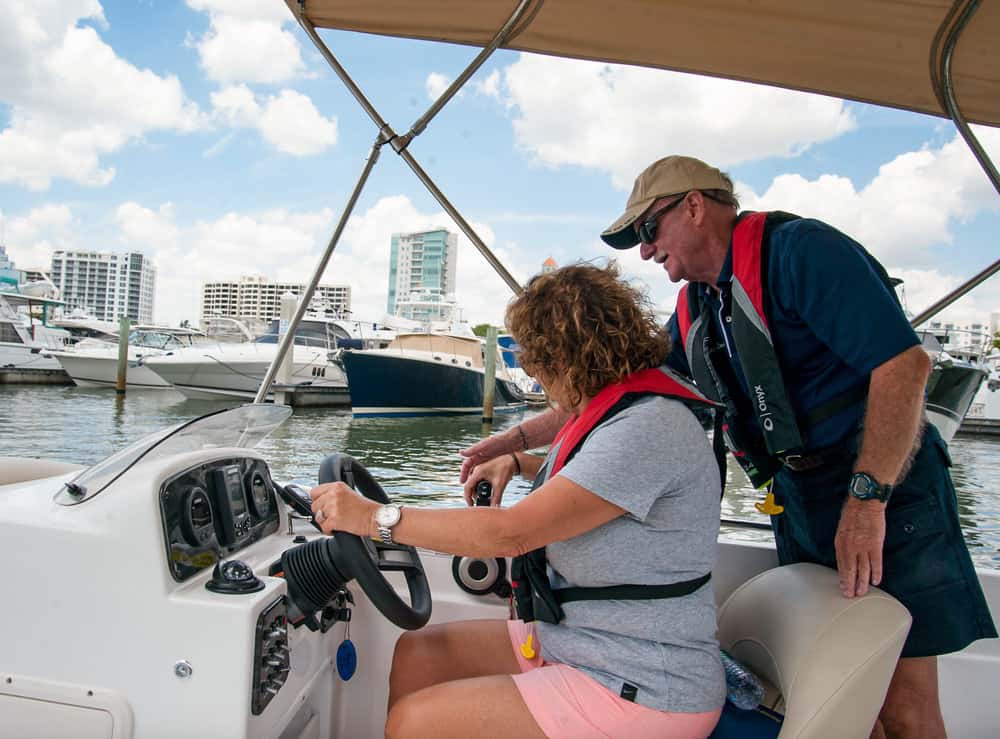It wasn’t a call that Harford County, Maryland’s Animal Control gets every day. One morning last week, a report came in that a fisherman had caught a fish at Tydings Park along the Havre de Grace waterfront. Before he could remove it from his line, a waterbird swooped down and grabbed the fish. Now he had caught a fish and a bird. The fish, hook and bird were all tangled on his line.
At the time, the fisherman described the bird as a “loon”, but it was later identified as a double-crested cormorant, a waterfowl species native to the Bay that is commonly confused with the loon.
Animal Control Officer Marika Krejci responded to the park to help the hooked bird, which had emerald green eyes, a “razor sharp beak” and a “spicy” demeanor, according to a Facebook post from the Harford County Sheriff’s Office.
Krejci is no stranger to wildlife rescues like this: she has been in the news in recent years for rescuing injured ospreys and even abandoned roosters.
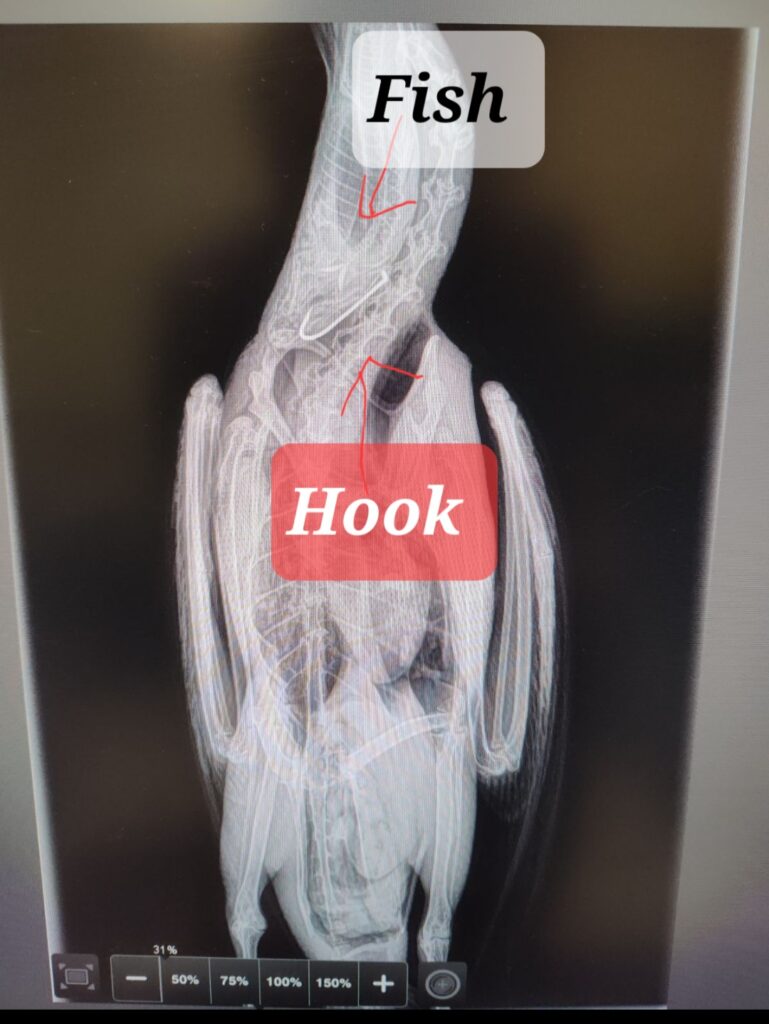
She brought the cormorant to Chadwell Animal Hospital, a Harford County facility that often deals with wildlife. Once it arrived, veterinarian Dr. Keith Gold anesthetized the bird and used an endoscope down its throat to remove the hook and fishing line. He says the hook pulled right out of the fish’s mouth, so he was able to remove it without injury to the cormorant, and the bird was able to keep its fish meal.
The entire process took no more than an hour, Dr. Gold says, and credited that success to the fisherman who “did the right thing” by reporting the hooked cormorant right away rather than just cutting the fishing line to free it.
“That fisherman saved its life by not cutting the line and letting the bird slowly die,” he explains, because hooks left in wildlife eventually cause fatal injury. Over his 30 years treating animals Dr. Gold has seen eagles, turtles and great blue herons come into the animal hospital with hooks in their stomachs and lines tangled on their legs or wings.
He says even when people find an animal tangled with fishing gear, it takes awhile to catch and treat it. Sometimes by then, it can be too late.
As for the cormorant, it was fortunate to be caught and taken to the hospital right away. Animal Control was able to successfully release the bird back to its natural habitat of Tydings Park, where it will continue a life of hunting fish.
-Meg Walburn Viviano

